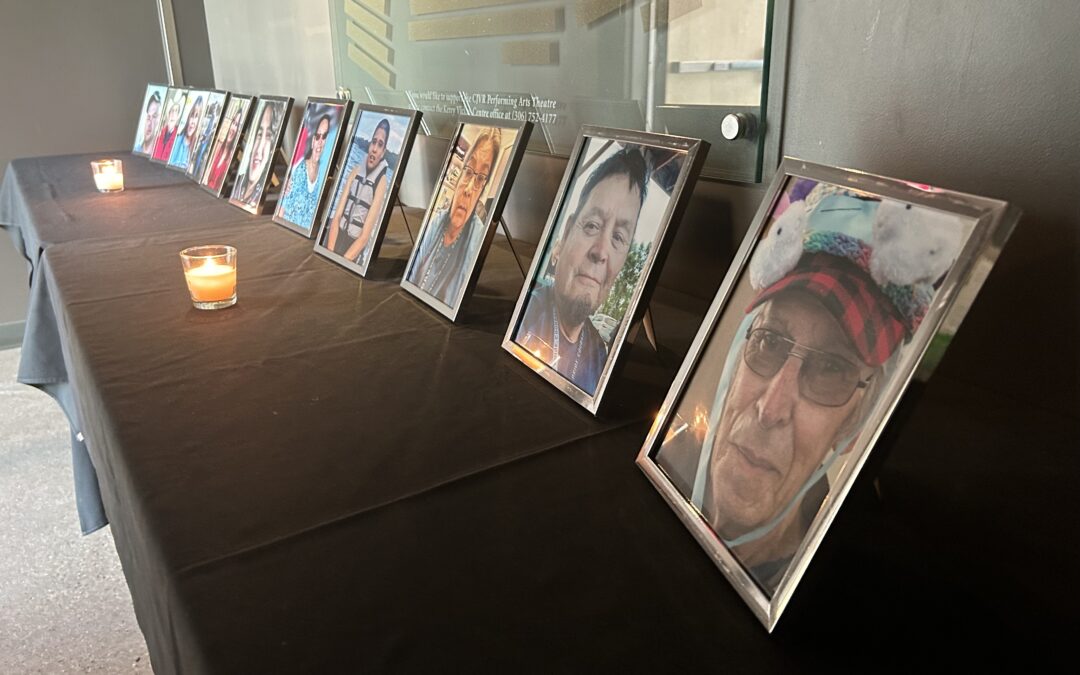WARNING: Distressing content
The Coroner’s Inquest looking in to the the mass stabbing on James Smith Cree Nation and in the Village of Weldon learned more about Myles Sanderson Friday.
Matthew Logan, a criminal investigative psychologist, who was tasked with partially authoring a post mortem behaviour analysis report was the first witness of the afternoon. Logan explained to put together his report he looked at a range of information, including correctional records, which included information Myles disclosed while he was in custody. Logan said the aim of the report is to answer a range of questions about the crime, including some questions victims may still be asking.
“Why these folks, why were they the ones selected,” he said.
Logan, who has helped write similar reports on mass casualty events in Nova Scotia and Alberta, said his research also involved spending time on the ground on James Smith Cree Nation.
When looking in to Myles’ background, Logan said he found that his childhood was not the most healthy one.
“We have a childhood that was filled with abuse and instability,” he said.
During his childhood Logan said Myles lived between the homes of his grandfather and his father. When he was in prison, Myles told staff his grandfather had threatened to shoot him. He started using drugs and alcohol at a young age and admitted to using meth and cocaine later in his life.
“This is somebody who had a very full history of substance abuse,” said Logan.
The postmortem analysis found Myles showed signs of someone who had a number of personality disorders, including psychopathic traits. Logan said analysis found other anti social personality disorders, including intermitted explosive disorder. Overall he said people with these disorders tend to have issues with authority.
“This is someone who likes to break rules,” he said.
Logan’s research as well indicated Myles showed signs of someone who had Fetal Alcohol Spectrum Disorder (FASD). He said it was found Myles’ mother drank while she was pregnant with him.
Part of Logan’s testimony focused on the concept of ‘leakage.’ He said people who commit acts of mass violence tend to let leak what they are planning to do sometimes intentionally and other times not. Logan said in many cases people share their plans with others and the statements are not always taken seriously.
One factor which could have played a role in triggering the violent attacks by Myles was that there was a warrant out for his arrest, which might have played a role in triggering him to violence. Logan explained people with the traits Myles had could respond in a bad way to what could come about as a result of having a warrant.
“Their freedom is going to end,” he said.
When it comes to preventing similar incidents in the future, Logan said work needs to be done to reach people early on in life. Specifically getting supports to kids as young as eight when warning sites might first start to emerge. He added too often intervention comes too late.
“That’s where it all begins, childhood,” he said.
Various grievances drove attacks
Staff Sgt. Carl Seseley helped Logan in putting together the report. Seseley, a trained criminal profiler with the RCMP explained the victims of the mass stabbing fit into a number categories. There were people who were primary targets, followed by those who were secondary targets. The Staff Sgt. said primary targets were people who Myles had a direct grievance with while the secondary people were targets just because of their affiliation with the person who Myles had a grievance with.
“A grievance is a feeling of in having been wronged in some way,” said Seseley.
There were also people who were killed because they got in the way of Myles while he was trying to hurt other people, while a few people were victims for unknown reasons.
To help arrive at their conclusions, Seseley said they looked at the victims and their relationships and previous interactions with Myles. They as well looked at who the victims were associated with and their relationships with Myles. He explained this type of analysis falls within the discipline of Victimology.
“(It) helps us to understand why they were a victim,” he said.
The primary targets included the parents of Vanessa Burns, Myles’ former common law partner, specifically Earl Burns Sr, who Myles had gone to jail for assaulting in the past. Seseley said along with the prior history, Myles drove quite a distance from where he was previously to get to the Burns home.
“He wanted to get there,” he said.
In the case of his brother Damien, Seseley said when Damien stopped the first attack he got in the way of Myles, who had a “Mission” he was looking to carry out.
“He was interfering with Myles Sanderson’s mission,” he said.
A number of victims were also harmed because Myles believed they were associated with the Terror Sqaud gang, a group he had a problem with. Investigators were not able to find a reason why Myles had issues with the gang and people in it.
When talking about ways to prevent similar tragedies in the future the Staff Sgt. talked about the concept of leakage and how people who are planning to commit mass acts of violence usually let it be known in some form and that they are planning to hurt people.
“We can’t ignore when someone makes a threat,” said Seseley.
Talking Stick is a Saskatchewan-based free anonymous chat platform that connects people seeking emotional support to a trained Indigenous peer advocate 24/7. https://my.talkingstick.app/
